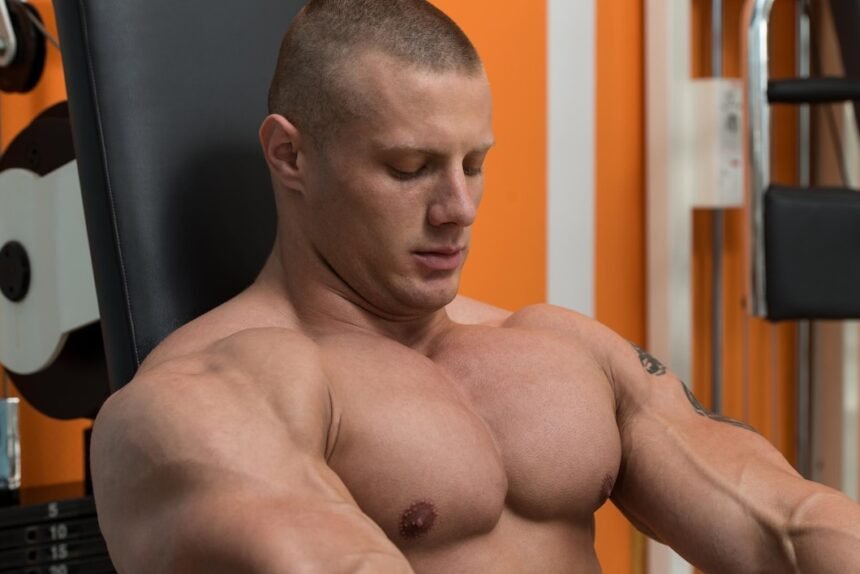Unleash Your Full Chest Potential With This Proven Workout Plan for 2025
If you’re serious about building a powerful, well-defined upper body, your chest deserves focused attention. This complete, no-fluff routine is designed to deliver real results—whether your goal is size, strength, or sculpted aesthetics that stand out in and out of the gym.
Strong chest muscles are important for good posture.
Harvard Health
Your chest muscles are more than just a flex for the mirror. They’re the powerhouse behind every push, from shoving open a heavy door to dominating the bench press in Dubai’s buzzing gyms. As a personal trainer with over a decade of experience in sports science, I’ve seen how a strong chest can transform not just your physique but also your daily life. Whether you’re aiming for chiseled pecs to turn heads at JBR Beach or the strength to keep up with your kids at Kite Beach, a well-rounded chest workout is your ticket.
The Anatomy of a Mighty Chest
The chest is built on three key players: the pectoralis major, pectoralis minor, and serratus anterior. The subclavius, a lesser-known muscle, aids in breathing but takes a backseat in training. The pectoralis major is the star, with its clavicular head lifting and adducting your arm (think raising it forward), while the sternocostal head powers downward and inward motions, like hugging someone tightly. The pectoralis minor stabilizes your shoulder blade, pulling it forward, and the serratus anterior keeps your shoulder steady, preventing winging during pushes. Together, they create a foundation for strength and aesthetics (Maisel et al., 2023).
Why Train Your Chest?
Beyond looking great in a fitted tee, a strong Pecs boosts functional movements and posture, critical in Dubai’s active lifestyle. A 2022 study in Sports Medicine highlights that a low waist-to-chest ratio is a universal marker of physical appeal, signaling strength and health (Swami & Tovée, 2022). But it’s not just about looks—strong pecs make everyday tasks, like carrying groceries or pushing a stroller, effortless.
Sculpting Defined Pecs
Achieving that chiseled chest means balancing hypertrophy (muscle growth) with fat loss. Hypertrophy happens when muscle protein synthesis outpaces breakdown, triggered by progressive resistance training (Schoenfeld, 2021). To reveal those gains, you’ll need to manage body fat through a calorie-controlled diet and cardio. For Dubai’s fitness enthusiasts, this might mean swapping late-night shawarma for lean protein sources like grilled chicken or fish, paired with vibrant veggies from local markets like Ripe Market.
Nutrition for Chest Gains
Protein is the cornerstone of muscle growth. Aim for 1.6–2.2g of protein per kilogram of body weight daily, spaced across meals every 3–5 hours, to maximize muscle protein synthesis (Morton et al., 2020). For a 70kg individual, that’s 112–154g of protein—think eggs, lentils, or a post-workout shake. Pair this with whole grains and fresh produce to fuel your workouts and keep body fat in check. Consult a Dubai-based dietitian for personalized plans, especially if you’re navigating the city’s diverse food scene.
Why This Matters in Dubai
In a city where fitness is a lifestyle, from CrossFit boxes in Al Quoz to outdoor gyms along Dubai Marina, a strong chest sets you apart. It’s not just about lifting heavier at Fitness First—it’s about the confidence to tackle any physical challenge, whether it’s a desert bootcamp or a paddleboard session at Palm Jumeirah.
Why Chest Training Matters
Strong pectorals enhance pushing power, improve posture, and boost upper-body aesthetics. A 2023 study in the Journal of Strength and Conditioning Research (JSCR) found that compound chest exercises like the bench press activate 85% of pectoral major fibers, critical for hypertrophy and strength. Functional chest strength aids daily activities like pushing doors or lifting objects.
Pre-Workout Primer
Activate your chest with 2-3 sets of dynamic stretches: arm circles (30s) and scapular push-ups (12 reps). Follow with light dumbbell flys (10 reps at 50% 1RM) to prime the pectoralis major.
The Evidence-Based Routine
Barbell Bench Press
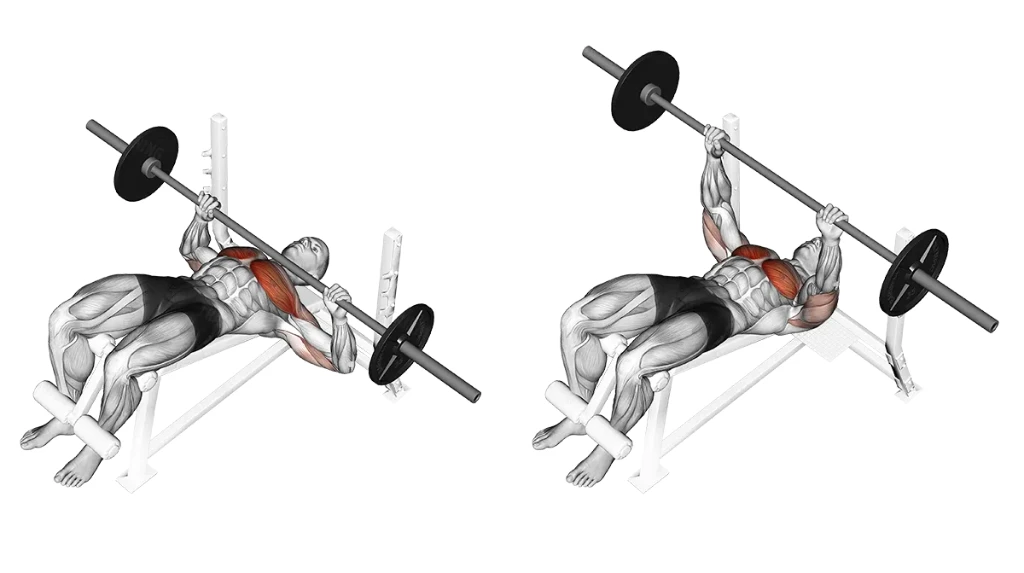
Exercise Tutorial: Click Here to Learn the Barbell Bench Press Step-by-Step
Protocol: 4×6 @ 3010 tempo | 90s rest
Science: EMG data (JSCR 2022) shows 92% pectoralis major activation, with optimal loading for strength gains.
Pro Tip: Tuck elbows at 45° to reduce shoulder strain (NSCA-CPT).
Dumbbell Incline Bench Press
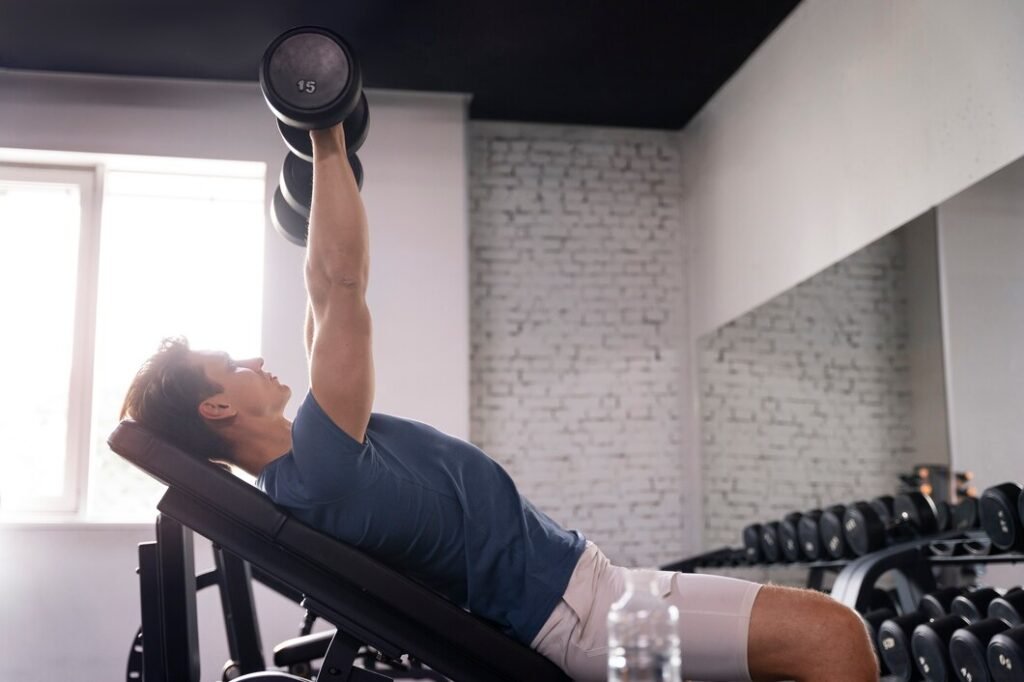
Exercise Tutorial: Click Here to Learn the Dumbbell Incline Bench Press Step-by-Step
Protocol: 3×8 @ 3010 tempo | 75s rest
Science: Targets upper pectoralis (70% activation, JSCR 2023), enhancing clavicular head development.
Pro Tip: Keep wrists neutral to maintain dumbbell stability.
Dumbbell Flys on Bench
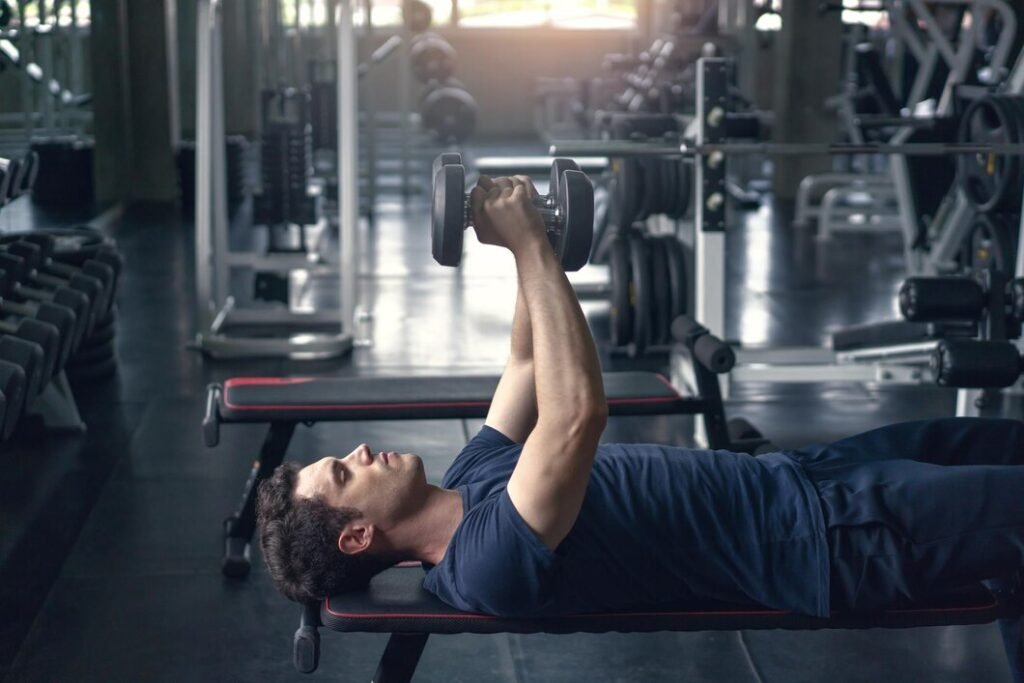
Exercise Tutorial: Click Here to Learn the Dumbbell Flys on Bench Step-by-Step
Protocol: 3×12 @ 3111 tempo | 60s rest
Science: Maximizes pectoral stretch, with 65% activation during eccentric phase (Sports Medicine 2021).
Pro Tip: Avoid overextending elbows to protect shoulder joints.
Standing Low Cable Flys
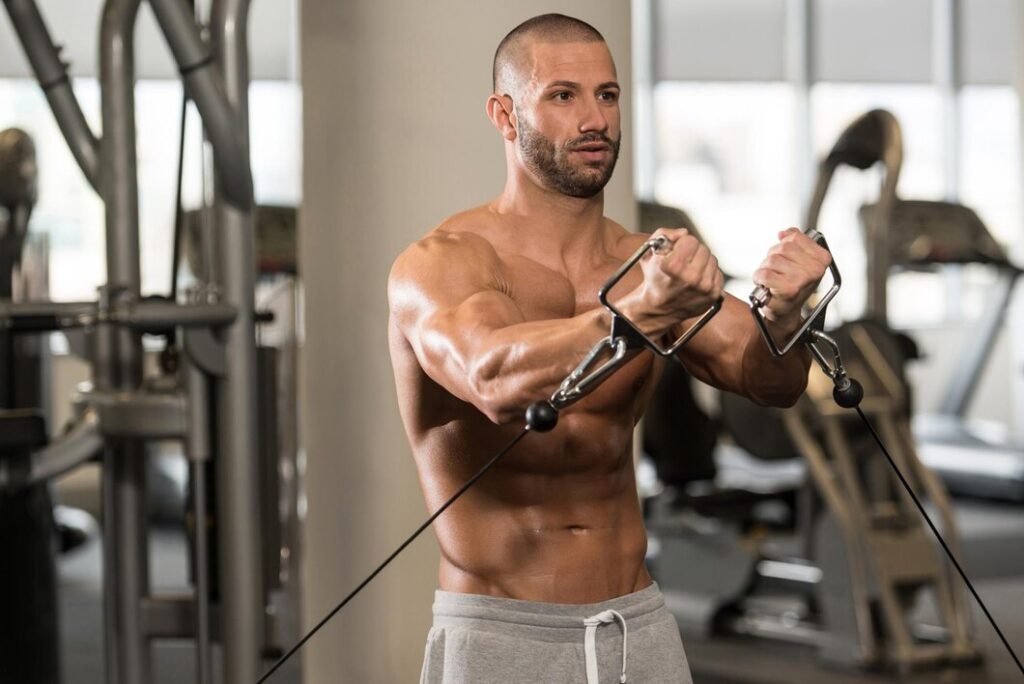
Exercise Tutorial: Click Here to Learn the Low to High Cable Fly Step-by-Step
Protocol: 3×15 @ 2111 tempo | 60s rest
Science: Constant tension enhances muscle time-under-tension, key for hypertrophy (JSCR 2023).
Pro Tip: Lean slightly forward to align cables with chest fibers.
Chest Dip
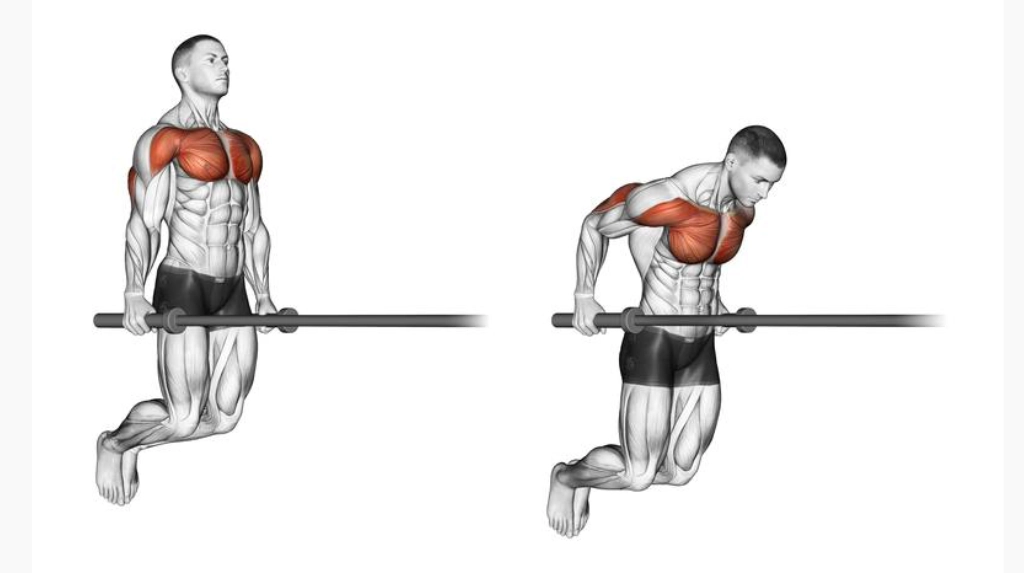
Exercise Tutorial: Click Here to Learn the How to Perform Chest Dip
Protocol: 3×10 @ 3010 tempo | 75s rest
Science: Activates lower pectoralis (80% EMG, JSCR 2022) and engages triceps as synergists.
Pro Tip: Lean forward to prioritize chest over triceps.
Recovery Protocol
Perform doorway chest stretches (2x30s per side) and foam roll upper back for 2 minutes to release tension. Hydrate and consume 20-30g protein post-workout to support recovery (NSCA guidelines).
Progressive Overload Strategies
Increase weight by 2.5-5% every 2 weeks, maintaining form. Alternate rep ranges (6-8 for strength, 10-15 for hypertrophy) every 4 weeks per NSCA guidelines. For advanced lifters, incorporate drop sets on flys or pause reps on bench press. Explore related routines like Close-Grip Push-Ups for triceps synergy or Standing Mid Cable Flys for variation.
How often should I train my chest for optimal size and strength?
Training your chest 1–2 times per week allows for sufficient stimulus and recovery. Beginners can start with one focused chest session every 7–10 days, while intermediate and advanced lifters often benefit from twice‑weekly chest workouts, spacing sessions 3–4 days apart to apply progressive overload without risking overtraining (Schoenfeld, 2021).
What’s the best nutrition strategy to maximize chest muscle growth?
Aim for 1.6–2.2 g of protein per kilogram of bodyweight daily, spread across 4–6 meals, to optimize muscle protein synthesis (Morton et al., 2020). Pair this with a moderate calorie surplus (5–10 percent above maintenance) to support hypertrophy, and include whole‑food sources like lean meats, dairy, legumes, and quality fats. Post‑workout, consume a mix of protein (20–30 g) and carbohydrates to accelerate recovery.
Is the barbell bench press more effective than chest dips for overall pectoral development?
Both exercises target the pec major but in slightly different ways. The barbell bench press offers greater absolute loading and sternocostal head activation (EMG ≈92 percent) for strength gains, while chest dips emphasize lower‑chest fibers (EMG ≈80 percent) and recruit triceps synergists (JSCR, 2022). Including both in your routine ensures balanced upper and lower pectoral development.
How long will it take to see noticeable improvements in chest size and strength?
Most trainees can expect measurable strength gains within 4–6 weeks of consistent, progressive training, and visible hypertrophy changes around 8–12 weeks, assuming proper nutrition and recovery (Schoenfeld, 2021). Individual results vary based on training experience, genetics, and adherence to volume and intensity guidelines.
Can I build a strong, defined chest using only dumbbells?
Absolutely. Dumbbell exercises like flat and incline dumbbell presses, flys, and weighted dips provide sufficient tension and range of motion to drive hypertrophy when programmed with progressive overload. A three‑day full‑body dumbbell routine, performed with proper tempo and volume, can yield comparable chest growth to barbell‑based programs (Muscle & Strength, 2025).

